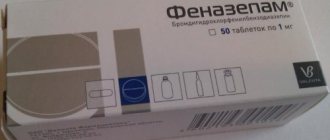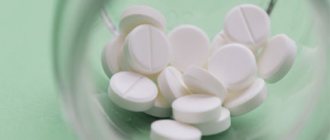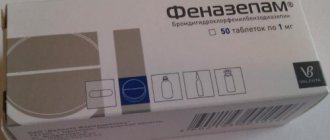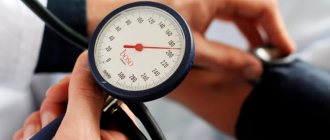Alcoholism is a psychological and physical dependence on the use of ethyl alcohol. It would seem that everything is simple - you need to remove these two types of addiction, and the person will be healthy. However, the treatment of alcoholism has many of its own nuances, and we will talk about them today. For example, how does phenazepam help in treating withdrawal symptoms, and why should it be used with caution? We will also note the general causes and sequence of development of the disease, and outline approaches to its treatment.
Important! The article is for informational purposes only. Prescription and dosage can only be prescribed by your doctor.
Phenazepam in narcology
Phenazepam in the form of tablets
Phenazepam is a common drug, including in addiction medicine. It is used for neurological problems; phenazepam is used to treat:
- neuroses,
- anxiety states,
- insomnia,
- phobias.
Phenazepam is also used for hangovers to relieve withdrawal symptoms.
Like all benzodiazepine tranquilizers, phenazepam restores the central nervous system and normalizes its functioning. It is necessary to take phenazepam with a hangover with caution and only under the supervision of a doctor.
Literature:
- Bekker R.A., Bykov Yu.V. Once again about Phenazepam. Psychiatry and psychopharmacology. 2017; 19 (5): 15–24.
- Chekulaev M.I., Maksimova T.V., Barsegyan S.S. The dangers of phenazepam as a street drug. Peoples' Friendship University of Russia. Faculty of Medicine. Department of Pharmaceutical and Toxicological Chemistry.
- A.Yu. Nenastyeva. Phenazepam: on the issue of effectiveness and safety of taking benzodiazepine derivatives. Journal of Neurology and Psychiatry, 12, 2021.
- Tranquilizers are benzodiazepine derivatives in psychiatry and general medicine. Ed. Smulevich A.B. - M.: “Media Sphere”, 1999.
Rules for taking phenazepam for withdrawal symptoms
Indications for the use of phenazepam include alcohol withdrawal syndrome. The course of treatment can be quite long. Phenazepam is taken from several weeks to several months.
Phenazepam should never be taken with alcohol, as this will lead to the opposite result and increase the withdrawal syndrome.
When treating withdrawal symptoms in alcoholism, phenazepam is prescribed 1-2 tablets per day, up to a total of 5 mg. The daily dose of phenazepam is divided into 2-3 doses. In neurology, the maximum daily dose of phenazepam reaches 10 mg in the treatment of diseases with muscle hypertonicity.
Typically, treatment with phenazepam is prescribed for up to two weeks, and then the dosage is gradually reduced to avoid withdrawal symptoms. Phenazepam itself can cause addiction and withdrawal symptoms, so you need to take it carefully.
Overdose of Phenazepam due to alcohol intoxication
If Phenazepam tablets and alcohol were taken at the same time, you should urgently seek medical help. Before doctors arrive, you can independently reduce the likelihood of critical intoxication and reduce damage to health. To do this, before the ambulance arrives, you must:
- Rinse the stomach . You need to drink 5-6 glasses of a weak soda solution and induce vomiting. The procedure must be repeated until the person begins to vomit with clean water.
- Take sorbent . Activated carbon absorbs and binds toxins, so in some cases it serves as an alternative to gastric lavage.
- Keep the person conscious . It is necessary by any means to prevent the patient from fainting. If this does happen, the person must be placed on his side so that in case of involuntary emptying of the stomach, the vomit does not block the airways.
Treatment of withdrawal symptoms
Treatment of withdrawal syndrome in alcoholism can be carried out in a specialized clinic and at home. Limitations on the provision of care at home include a complicated medical history and the critical condition of the patient. Otherwise, everyone decides for themselves what is more convenient and profitable for them; any option has its advantages:
- A familiar home environment is more psychologically comfortable for the patient.
- Relatives are able to carefully take care of the needs of the alcoholic.
- When treated at home, you save on hospital stays.
- Treatment and diagnostic hardware is available at the clinic.
- Constant medical supervision makes it possible to urgently provide the necessary assistance.
- There is no access to alcohol in the clinic
Effective treatment for alcoholism
Treatment of alcoholism in the full sense of the word is the achievement of freedom from addiction, long-term remission. Such treatment involves drug detoxification of the body, rehabilitation and adaptation to ordinary life - socialization.
Most alcohol addicts do not immediately seek such treatment; in fairness, it is worth saying that their relatives usually call a narcologist when their drinking bouts begin. Therefore, in addition to the full course of treatment, there are also a lot of procedures that help a person with addiction stay afloat: treatment of withdrawal symptoms, withdrawal from binge drinking, coding. These services in narcology are in widespread demand today.
Historical facts
The drug was invented in the 1970s. The developers who received the state order for the new medicine were the scientific directors of the departments of pharmacology from the Odessa Institute of Physics and Chemistry. After successful research and launch of the drug on the market, the group of voters received the USSR State Prize.
The peak use of the drug came at the end of the 80s, when facts of abuse of barbiturates were published and proven. Phenazepam and its analogues have become alternative drugs with similar effects but fewer adverse reactions.
Why alcoholism needs to be treated in a clinic
Alcohol addiction is one of the most common drug addiction diseases. You can call it a mass disaster, because this disease has entered almost every family in Russia. Alcoholism is a disease that is expressed in excessive and uncontrolled craving for alcohol. An alcoholic drinks doses of alcohol that a healthy person would never dream of, although this only happens for the time being.
Alcoholism is a real drug addiction and has all its signs. It completely subjugates the life of an addicted person, destroying all its spheres: social, physical, emotional and spiritual. Drug addiction, if it appears and is not treated, never stands still and progresses. With each intake, the patient consumes more and more alcohol, the body’s tolerance to it increases, up to the third and final stage of addiction.
Alcohol addiction, like any drug addiction, does not affect just one organ in the human body, but causes irreparable harm to the entire body. Constant severe intoxication leads to the fact that toxins clog the body and are not removed from it immediately, because the liver and kidneys cannot cope with such a volume of poisons.
It is the constant intake of alcohol in the body that leads to such a phenomenon characteristic of this disease as alcohol withdrawal syndrome.
Toxicity
Like other benzodiazepines, common effects of phenazepam toxicity include depression, imbalance, amnesia, dizziness, loss of coordination, slurred speech, confusion, drowsiness, blurred vision, ataxia, muscle hypotension, tachycardia (or bradycardia), and both auditory and visual hallucinations. These effects may last up to 3 weeks after administration and may vary and alternate. In 61 cases that were reported in Sweden over an 18-month period, 14 (23%) of the 61 patients experienced symptoms for more than 5 days after dosing, with depression lasting up to 3 weeks.
Withdrawal syndrome in alcoholism
The cause of binge drinking is alcohol withdrawal syndrome. This is a complex of pathologies and dysfunctions that appear in an alcoholic when he gives up alcohol. Withdrawal syndrome is not the same as a regular hangover. Such a phenomenon as withdrawal syndrome appears only in the second stage of the disease and continues in the third. This is a number of psychological, somatic, neurological and autonomic disorders:
- Strong headache.
- Gastrointestinal disorders.
- Violations of the body's thermoregulation, chills.
- Cardiac dysfunction, rapid heartbeat, tachycardia.
- Tremor of the limbs.
- Depressed mood, depression.
- Strong desire to drink alcohol.
- Uncoordination of movements.
- Increased sweating.
- Sleep disturbances, insomnia.
Usually the patient is unable to endure these painful symptoms, so he drinks alcohol. That is why withdrawal syndrome requires treatment with medications, otherwise the patient faces binge drinking.
Criminal practice
Phenazepam is a hard drug, which means it is illegal to possess, give to friends, or sell.
A person's possession of this substance can result in up to two years in prison and/or a substantial fine.
Distribution or sale, even to your friends, may result in up to 14 years in prison and/or a substantial fine.
Fact: While under the influence of phenazepam, you may not be able to drive the next day. If you are caught, you will receive a large fine, be suspended from driving and even risk going to prison.
How does binge drinking occur?
Binge drinking is a long-term, constant, uncontrolled consumption of alcohol. An alcoholic is unable to stop the binge on his own, so in this situation he needs the help of loved ones and calling a narcologist.
An alcoholic cannot stop drinking on his own
By taking another dose of alcohol, the alcoholic tries to get rid of withdrawal symptoms. Each time use is stopped, withdrawal symptoms begin to appear within 5-6 hours. And here there are two options: endure the painful manifestations or seek treatment from a narcologist. Since the patient has a hard time: he has a headache, his blood pressure fluctuates, tachycardia and shortness of breath, depression appear, he is rarely able to endure all this.
Keep in mind that unlike a hangover, alcohol withdrawal symptoms worsen over several days and can even last several weeks in total. But once upon a time, alcohol brought positive experiences to the alcoholic, which allowed him to become hooked on addiction.
Risks and consequences
Here are the main risks of taking this drug:
- Phenazepam is a powerful benzodiazepine and can easily be overdosed on.
- Phenazepam is a depressant, so mixing it with other depressants such as heroin, tranquilizers or alcohol can result in enhanced effects and possible death.
- The effects begin to appear after a couple of hours. This means there is a risk of repeat dosing before people feel the effects , again increasing the risk of overdose.
- Phenazepam is used to make counterfeit Valium (diazepam).
Psychological craving for alcohol
The human psyche is always looking for the missing link that will help it experience the greatest thrill from life. In the case of alcohol addiction, this high is chemical. A person prone to alcoholism experiences more pain than joy from contact with reality.
Some experts believe that the issue is a congenital defect in the biochemical processes of the body of the future drug addict. Such a person is already born with disturbances in the production of a certain type of natural neurostimulants. Therefore, he experiences less joy, satisfaction, and desire to act actively than people whose production of these compounds is normal.
In addition, there are various complexes, fears, attitudes that prevent a person from building normal productive and happy relationships with the world, with people. Some of them are related to character traits, others to upbringing. Many of our parents’ attitudes are harmful and limiting beliefs, because our parents and grandparents had a hard time. And now their experience becomes a heavy burden for us, which prevents us from developing in new conditions.
Result: failures, loneliness, lack of joy in life. In fact, such a person lacks the same natural stimulants: adrenaline, endorphins, serotonin, as the first type of people, whose biochemistry is disturbed from birth. The result is a stable psychological attraction to alcohol.
How long do drug addicts live?
Life expectancy with tranquilizer abuse reaches 3-4 years. But the higher the dose and the more often it is taken, the fewer years the addict has to live. In pharmaceutical doses, the drug does not affect internal organs and the nervous system. If you systematically exceed the permissible limit, irreversible changes will occur in the cerebral cortex. Liver cirrhosis with chronic liver failure may develop.
Phenazepam damages the kidneys, causing chronic kidney disease (CKD or kidney failure). When decompensation occurs in the functioning of the kidneys and liver, a person dies, even if assistance is started.
Physical craving for alcohol
With constant use, ethyl alcohol has an active effect on the body and is included in its subtle biochemical processes. It replaces natural compounds that are normally produced by the body. Now they enter him effortlessly and in large doses. Naturally, natural compounds stop being produced because there is no need for it.
This is how a person acquires a physical craving for alcohol. When the patient’s body does not receive the next dose, it turns out that the body is left without the biochemical elements necessary to ensure life. At this moment, a person feels pain, functional physiological disorders, psychological discomfort, that is, he begins to experience alcohol withdrawal syndrome, also known as alcohol withdrawal syndrome, which requires treatment.
Process of assimilation
There is not much confirmed scientific information about the metabolism of phenazepam in humans. On average, it takes a person about 4 hours to achieve complete absorption of one dose into the blood. The usual clinical dose of 0.5-2.0 mg produces therapeutic plasma concentrations of 20 to 60 mcg/L. Phenazepam is slowly eliminated from the body. The withdrawal process can take approximately 60 hours, which is generally typical for benzodiazepines. However, patients with epilepsy who received 2 mg phenazepam intramuscularly or intravenously reported a much faster metabolism of 14.9 to 15.6 hours.
“Help” - comprehensive treatment of alcoholism
You can contact a drug treatment center in case of acute situations that are not uncommon in alcohol addiction: binge drinking, withdrawal syndrome, acute alcohol poisoning. You can call a narcologist at your home by calling our 24-hour hotline. The doctor arrives on call within an hour.
You can also contact our specialists if you experience withdrawal symptoms after a course of treatment with phenazepam. As we noted above, this drug can also cause addiction.
You can undergo a full course of treatment for alcoholism, which includes detoxification, rehabilitation and resocialization. Very often, before starting treatment, the patient’s motivation is required, because alcohol addicts rarely want to be treated. This entire range of services is offered in ours.
I don’t want to scare you, but every day, until alcoholism is treated, the disease harms a person’s health. Daily intoxication is dangerous in itself, and also leads to chronic diseases of internal organs. Therefore, every day that you do nothing, the cost of treatment increases. And on temporary measures, such as withdrawal from binge drinking, treatment of withdrawal syndrome, you end up spending the same amount as you would spend on a complete cure.
That is why we recommend that you seek help today, thus preserving the health of your relative and saving on less expensive treatment. At any time, you can call our call center, its number is listed on the website page, or fill out the feedback form, and we will call you back. Start your journey to a life free from alcohol addiction now.
Clinical research by doctors
Clinical studies of phenazepam conducted on thousands of patients suffering from various neurotic, neuropathic and psychopathic disorders accompanied by tremor, irritability, tension, anxiety and sleep disturbances have shown that phenazepam is an effective and safe sedative.
Phenazepam has shown effectiveness in the treatment of chronic alcoholism, especially with alcohol abstinence. It is successfully used in anesthesiology in preparing patients for surgical operations and is able to enhance the effect of general anesthetics and narcotic analgesics. In a clinical study, the effect of phenazepam was studied in patients suffering from adjustment disorder. Adjustment disorder is defined as “a state of emotional disturbance affecting the performance of social functions that occurs during the period of adjustment to major life changes or stressful events in the patient's life.” The study compared 46 patients receiving phenazepam with 44 patients receiving the non-benzodiazepine anxiolytic etifoxine. No difference in anti-anxiety effect based on the Hamilton Anxiety Rating Scale was observed between both treatments.
In the study, 60% of patients receiving phenazepam reported that they were “significantly improved,” while the remaining patients reported “minimal improvement.” More than 75% of patients receiving etifoxine rated their condition as “much improved,” 10% as “minimally improved,” and 10% as “worsened.” Eight patients in the phenazepam group withdrew from the study due to side effects.
Side effects reported were drowsiness, dizziness, difficulty waking up, muscle weakness, headache, decreased alertness, and myasthenia gravis. The study results show that phenazepam is effective in the treatment of adjustment disorders.










